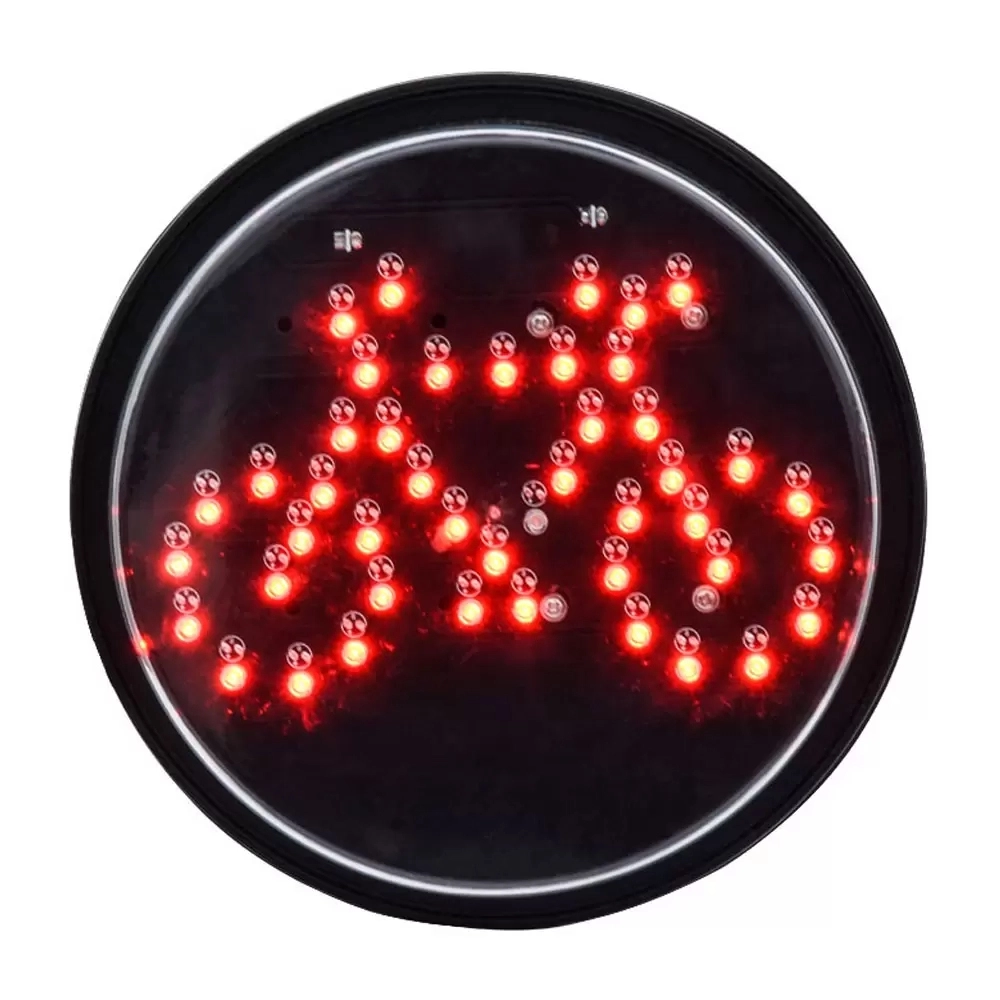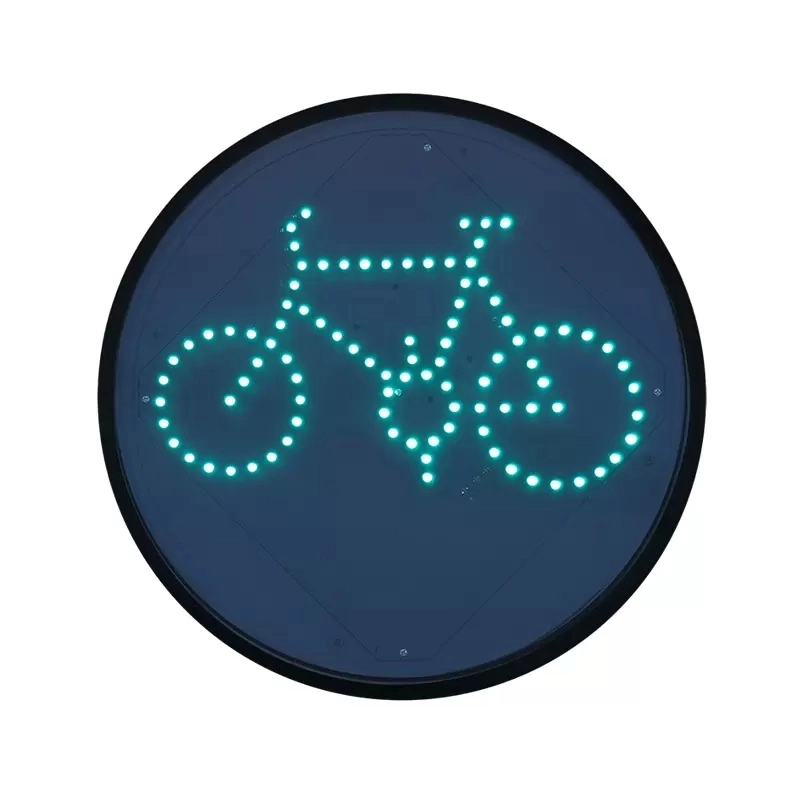Home > News > Industry News > Pedal Smarter: How Low Power Bicycle Traffic Light Modules Enhance Urban Bike Safety
Pedal Smarter: How Low Power Bicycle Traffic Light Modules Enhance Urban Bike Safety
As urban cycling grows in popularity, ensuring the safety of cyclists while promoting sustainable mobility has become a top priority for city planners worldwide. Traditional traffic lights are often optimized for motor vehicles, leaving cyclists vulnerable at intersections. Enter low power bicycle traffic light modules, a technological advancement that merges energy efficiency, visibility, and reliability to create safer cycling environments.
FAMA Traffic, a leading provider of integrated intelligent transportation solutions, specializes in smart signal control, traffic safety, and 5G multifunctional smart poles. With the mission of “making travel safer and smarter”, FAMA Traffic delivers solutions that are energy-efficient, robust, and adaptable, ensuring that urban cycling infrastructure meets the demands of modern cities.
This article explores how low power bicycle traffic light modules improve urban bike safety, reduce energy consumption, and integrate with intelligent transportation systems for smarter cities.

1. Optimizing Energy Efficiency Through Advanced Power Design
A defining feature of FAMA Traffic’s low power bicycle lights is their energy-conscious engineering. Unlike traditional signals, these modules are designed to minimize power consumption while maintaining bright, consistent illumination:
1.1 European Standard Power Supply
Each light module incorporates an independently designed Euro standard power supply, achieving high energy conversion efficiency with a power factor of up to 0.98. This design:
Reduces energy consumption
Minimizes heat generation
Promotes environmentally friendly urban infrastructure
1.2 Constant Current Drive
Constant current drive technology ensures stable LED operation, which:
Extends lamp lifespan
Maintains consistent brightness for cyclists
Reduces maintenance frequency and long-term operational costs
By combining these features, FAMA Traffic provides cities with high-performance, eco-friendly bicycle signal solutions that support sustainable mobility goals.
2. Reliable and Robust Operation
Urban intersections are high-stress environments for traffic lights, requiring resilience and reliability. FAMA Traffic’s modules incorporate:
2.1 Mesh Circuit Design
The light board uses a mesh circuit layout, automatically isolating faulty LED beads while keeping the rest operational. This ensures:
Continuous, clear signaling for cyclists
Minimal disruption in case of partial LED failure
Enhanced overall intersection safety
2.2 Electromagnetic Compatibility (EMC)
Strict adherence to European EMC standards ensures:
Reduced interference with power grids and nearby electronic equipment
Stable operation in densely populated urban areas
Extended module lifespan and reduced operational risk
These technologies guarantee continuous, reliable signaling, critical for protecting cyclists at busy intersections.
3. Enhancing Cyclist Safety at Intersections
Low power bicycle traffic lights contribute directly to safer cycling environments:
High Visibility: LEDs provide uniform brightness and color consistency, visible in all weather and lighting conditions.
Fault Resilience: Mesh circuit design prevents partial failures from compromising the signal, ensuring cyclists always have clear guidance.
Rapid Response: Stable power supply and EMC compliance prevent flickering or interference, reducing reaction time errors and potential accidents.
Integration with Smart Signals: Signals can be synchronized with vehicle traffic lights and pedestrian crossings, optimizing safety for all road users.
By providing reliable, visible, and responsive signals, these modules help reduce cyclist collisions and improve urban mobility flow.
4. Environmental and Economic Advantages
Implementing low power bicycle traffic lights provides tangible sustainability and cost benefits:
Reduced Energy Usage: Efficient LEDs and high-performance power supplies can cut energy consumption by 50–70% compared to conventional lights.
Lower Maintenance Costs: Constant current drive and mesh circuit technology minimize repair needs and extend service life.
Support for Green Mobility: Energy-efficient signals contribute to carbon footprint reduction, aligning with urban sustainability goals.
Long-Term Investment Efficiency: While initial installation costs may be higher, reduced energy bills and maintenance make these modules economically favorable over time.
These benefits position low power bicycle lights as a strategic choice for modern, sustainable urban infrastructure.
5. Integration with Intelligent Transportation Systems (ITS)
FAMA Traffic’s bicycle traffic light modules are designed for seamless ITS integration, enabling cities to:
Adapt to Real-Time Conditions: Lights can adjust cycles based on bicycle density, traffic flow, and pedestrian movement.
Data Collection and Analysis: Embedded sensors provide insights into cycling patterns, intersection usage, and safety metrics.
Connectivity: Integration with 5G multifunctional smart poles allows communication with vehicles, central management systems, and emergency services.
Future-Ready Infrastructure: Modules can serve as nodes in connected mobility networks, facilitating autonomous vehicle and smart intersection coordination.
Through these capabilities, bicycle traffic light modules not only enhance safety but also contribute to smarter, more connected urban transport networks.

6. Deployment Best Practices
For cities adopting low power bicycle lights, several considerations ensure maximum effectiveness:
Strategic Placement: Ensure signals are clearly visible to cyclists and motorists, minimizing blind spots.
Power Stability: European standard power supply with surge protection ensures consistent operation.
ITS Integration: Synchronize with pedestrian signals, vehicle traffic lights, and centralized management platforms.
Periodic Maintenance: Mesh circuit and robust components reduce interventions, but scheduled inspections maintain peak performance.
FAMA Traffic provides full deployment support, including installation, timing optimization, and maintenance guidance, guaranteeing long-term reliability.
7. Future Trends in Urban Cycling Safety
Low power bicycle traffic lights are part of a broader trend in smart city and sustainable mobility solutions:
AI-Driven Adaptive Cycling Signals: Lights adjust in real-time based on cyclist flow, traffic density, and environmental factors.
IoT-Enabled Safety Systems: Sensors enable vehicle-to-infrastructure communication, alerting drivers to cyclist presence.
Integration with Renewable Energy: Solar-powered and energy recovery modules reduce operational costs and emissions.
Enhanced Safety Features: Future signals may include pedestrian detection, cyclist preemption, and emergency vehicle priority.
These advancements ensure that bicycle traffic lights are not only energy-efficient but also critical components of connected, future-ready urban transport networks.
8. Conclusion
Low power bicycle traffic light modules are transforming urban intersections into safer, smarter, and more sustainable spaces for cyclists. With mesh circuit design, constant current drive, European standard power supply, and EMC compliance, FAMA Traffic ensures reliable operation, long service life, and minimal energy consumption.
By integrating these modules into intelligent transportation systems, cities can achieve enhanced cyclist safety, reduced environmental impact, and improved traffic efficiency, fulfilling the promise of modern, eco-friendly urban mobility.
